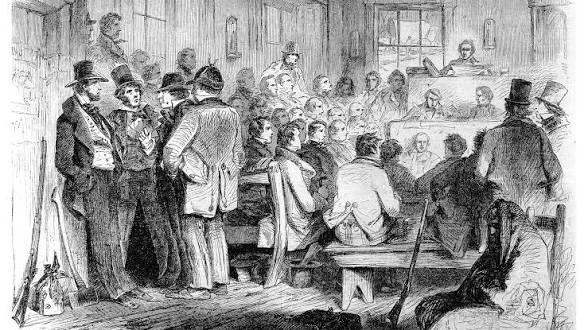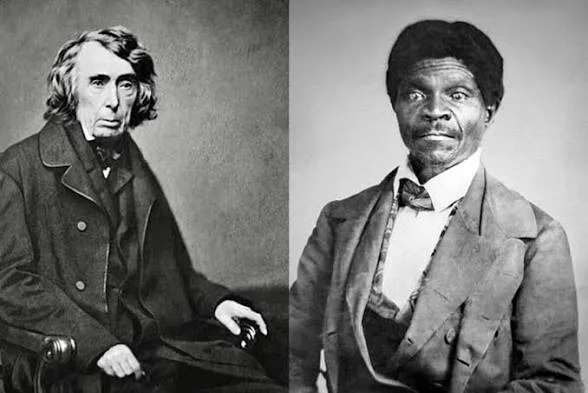-
 What: This compromise tried to keep balance between free and slave states. It let California join as a free state and passed the Fugitive Slave Act, which forced people to return escaped slaves.
What: This compromise tried to keep balance between free and slave states. It let California join as a free state and passed the Fugitive Slave Act, which forced people to return escaped slaves.
How it led to war: The Fugitive Slave Act angered Northerners, increasing tensions between the North and South. -
 What: This law let settlers in Kansas and Nebraska vote on whether to allow slavery (popular sovereignty).
What: This law let settlers in Kansas and Nebraska vote on whether to allow slavery (popular sovereignty).
How it led to war: It canceled the Missouri Compromise and caused fights between pro- and anti-slavery groups. -
What: Violent clashes broke out in Kansas between those for and against slavery.
How it led to war: The violence showed that the nation was deeply divided and willing to fight over slavery. -
 What: The Supreme Court ruled that African Americans weren’t citizens and that Congress couldn’t ban slavery in U.S. territories.
What: The Supreme Court ruled that African Americans weren’t citizens and that Congress couldn’t ban slavery in U.S. territories.
How it led to war: The decision made Northerners furious and strengthened Southern support for slavery. -
 What: Abraham Lincoln and Stephen Douglas debated slavery’s spread in new territories during their Senate race. How it led to war: The debates made Lincoln famous for opposing slavery’s expansion, worrying the South.
What: Abraham Lincoln and Stephen Douglas debated slavery’s spread in new territories during their Senate race. How it led to war: The debates made Lincoln famous for opposing slavery’s expansion, worrying the South. -
 What: Abolitionist John Brown tried to start a slave revolt by taking over a federal arsenal in Virginia. How it led to war: The raid terrified the South and made them believe the North wanted to destroy slavery by force.
What: Abolitionist John Brown tried to start a slave revolt by taking over a federal arsenal in Virginia. How it led to war: The raid terrified the South and made them believe the North wanted to destroy slavery by force. -
 What: Lincoln was elected president without any Southern support. How it led to war: The South saw his victory as a threat to slavery and began seceding from the Union.
What: Lincoln was elected president without any Southern support. How it led to war: The South saw his victory as a threat to slavery and began seceding from the Union.